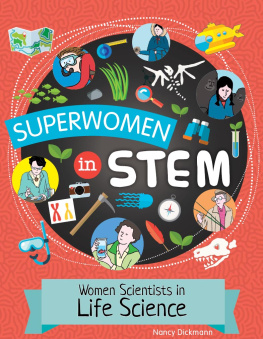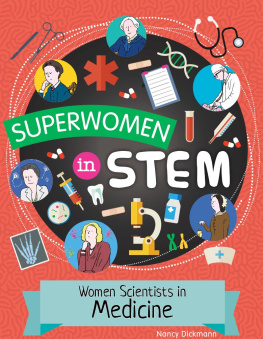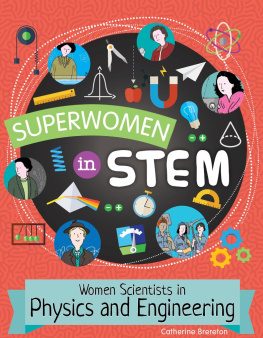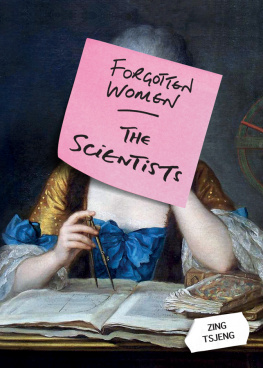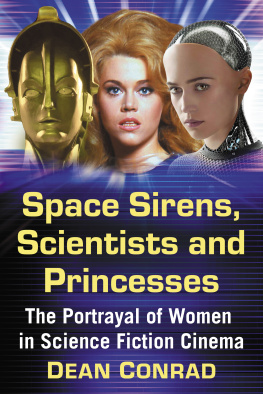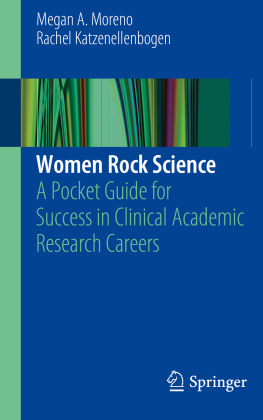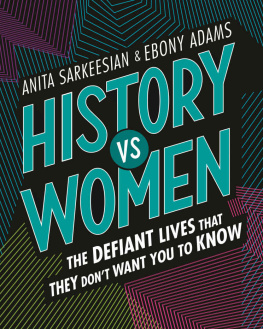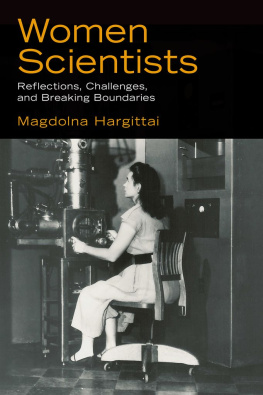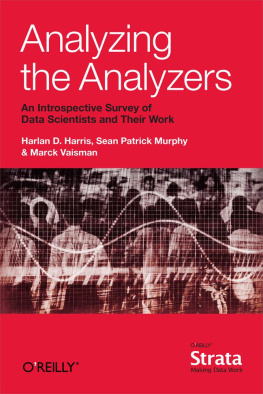WOMEN SCIENTISTS IN AMERICA
WOMEN SCIENTISTS
IN AMERICA
Forging a New World since 1972
MARGARET W. ROSSITER

2012 The Johns Hopkins University Press
All rights reserved. Published 2012
Printed in the United States of America on acid-free paper
2 4 6 8 9 7 5 1
The Johns Hopkins University Press
2715 North Charles Street
Baltimore, Maryland 21218-4363
www.press.jhu.edu
Library of Congress Cataloging-in-Publication Data
Rossiter, Margaret W.
Women scientists in America : forging a new world since 1972 / Margaret W. Rossiter.
p. cm.
Includes bibliographical references and index.
ISBN-13: 978-1-4214-0233-8 (hardcover : alk. paper)
ISBN-10: 1-4214-0233-5 (hardcover : alk. paper)
ISBN-13: 978-1-4214-0363-2 (pbk. : alk. paper)
ISBN-10: 1-4214-0363-3 (pbk. : alk. paper)
1. Women scientistsUnited StatesHistory20th century. 2. Women in scienceUnited StatesHistory20th century. 3. Women scientistsUnited StatesHistory21st century. 4. Women in scienceUnited StatesHistory21st century. I. Title.
Q130.R6835 2011
509.2273dc23 2011016268
[B]
A catalog record for this book is available from the British Library.
Special discounts are available for bulk purchases of this book. For more information, please contact Special Sales at 410-516-6936 or specialsales@press.jhu.edu.
The Johns Hopkins University Press uses environmentally friendly book materials, including recycled text paper that is composed of at least 30 percent post-consumer waste, whenever possible.
CONTENTS
ILLUSTRATIONS
PLATES
Following :
FIGURES
TABLES
ACKNOWLEDGMENTS
Once again it is a great pleasure at the end of a long project to look back and try to thank the many people and organizations who helped and made a difference. First there were the many librarians and archivists at Cornell University and elsewhere, who are too numerous to name individually but include Patricia Albright, Tanya Zarnish Belcher, Leonard Bruno, Peter Campbell, David Caruso, Elaine Engst, Sheridan Harvey, Pamela Henson, Robin Rider, Wilma Slaight, Sharon Gibbs Thibodeau, and Pat Viele. They were masters of their material, printed and electronic. At the Johns Hopkins University Press Henry Tom ushered the manuscript through the selection process, as he had the two previous volumes, before his retirement, and Joanne Allen brought the text and notes to their high level of accuracy, completeness, and consistency.
Valuable financial support for part of a sabbatical year and several research trips was provided by a grant from the Science and Technology Studies Program of the National Science Foundation, directed by Ronald Rainger and later Frederick Kronz. Cumulatively as important, and immeasurably more convenient, have been the annual research support of the Marie Underhill Noll Professorship at Cornell and the sabbaticals and study leaves of Cornells College of Arts and Sciences. Deborah Van Galder handled the administrative side throughout. At the end Mark Collins helped considerably with the illustrations, permissions, and some tables, Honghong Tinn performed some timely cross-checking, Sara Cleary generously volunteered to reformat the figures, and Joy Harvey constructed the fine index. The views expressed here are my own and do not represent those of any agency or institution.
Throughout, there was the continuing encouragement and support of my fellow scholars and friends, Sally Gregory Kohlstedt, Michele and Mark Aldrich, Joy Harvey, Clark Elliott, Ronald Kline, Mary Oates, Peggy Kidwell, and Pnina Abir-Am.
Last but far from least are the three without whoms, those without whom this book and much morea life and careerwould have been very different: my late mother, Mary Madden Rossiter (19132005), who was always there, always understood, and always supported me, even and especially in tough times; Sally Gregory Kohlstedt, who for more than forty years has believed in me and this long project, which she suggested in a Simmons College lunchroom in the early 1970s and of which she has since read every page, some more than once; and Patricia Carey Stewart, longtime vice chairman of the Cornell University Board of Trustees, who made sure I did not leave Cornell in 1991, when a temporary post ended, even if it meant that the College of Arts and Sciences had to create a new department, its first in twenty-five years. I hope this third (and final?) volume is worthy of their sustained support.
INTRODUCTION: THE NEW ERA
We live in historic times. This is especially true for American women in science and engineering. Opportunities have greatly expanded since the early 1970s because of a variety of factors, starting with but extending beyond two landmark laws passed in 1972new expectations, new energy, a growing economy, new technical industries and opportunities, battles won and programs instituted. The womens liberation movement of the late 1960s and early 1970s inspired many women scientists and their supporters to new levels of activism, and legislators passed and President Richard M. Nixon signed significant legislation that greatly affected traditional patterns in academia.
In a sense it started quietly. In the spring of 1972 the 92nd U.S. Congress, the most liberal of the twentieth century, passed historic legislation on equal employment opportunity for women in government and universities, the Equal Employment Opportunities Act and the controversial Education Amendments Act. The Wall Street Journal was right, and wrangles over enforcement have persisted ever since. But the enactment of the new laws was a godsend to those few already trying to sue universities (and discovering the many existing loopholes). The 1970s saw many epic lawsuits, including a few that went to the Supreme Court, which itself was changing and included one woman justice after 1981 and two for twelve years after 1993. The new legislation affected women scientists and engineers in several ways, for it outlawed the rampant discriminatory behavior that riddled academia, government agencies, industry, and private clubs, which all too many scientific societies were at the time.
But passage was one thing. How was this new legislation to be enforced, and if it was, how vigorously? Or would it just fall by the wayside, bypassed and ignored, a kind of paper tiger? What difference would it make? Or were the new laws to be just one part of a larger movement already under way? And what was to come of all the new energies released by a plethora of opportunitiesor were they, too, mere rhetorical illusions?
As a graduate student at Yale in the early 1970s, I was a small part of this. All of it was in the air when I asked my Yale professors of the history of science whether there had ever been any women scientists. The emphatic answer was assuredly not. (Even Madame Curie with her two Nobel prizes was discounted as a mere drudge who helped her husband Pierre.) In fact, I was only able to complete that volume by putting aside everything after 1972, the beginning of a deluge. At that point, dealing with the later period seemed an impossible or at least Herculean task. But as time passed, as a few (immense and unprocessed) archives became available, and as colleagues began to ask whether I was going to do a third volume, it seemed that I ought to try, although it would be difficult, since the cast was large, the topic wide-ranging, and everything seemed to have happened at once. Women scientists and, increasingly, engineers, often obscure and not the usual characters in the history of science, had come out of nowhere and done things women had never done before. For a while the topic threatened to diverge endlessly, but of course one does not need to find and read everything by everybody; one only needs enough to get the story nearly right, but not so complete that the publisher rebels and the reader gives up. Eventually the project reached its, and my, limits, and for those who wish I had done more, I urge them to take up their pen and dig in, for the topics abound, and the materials available continue to mount.
Next page


